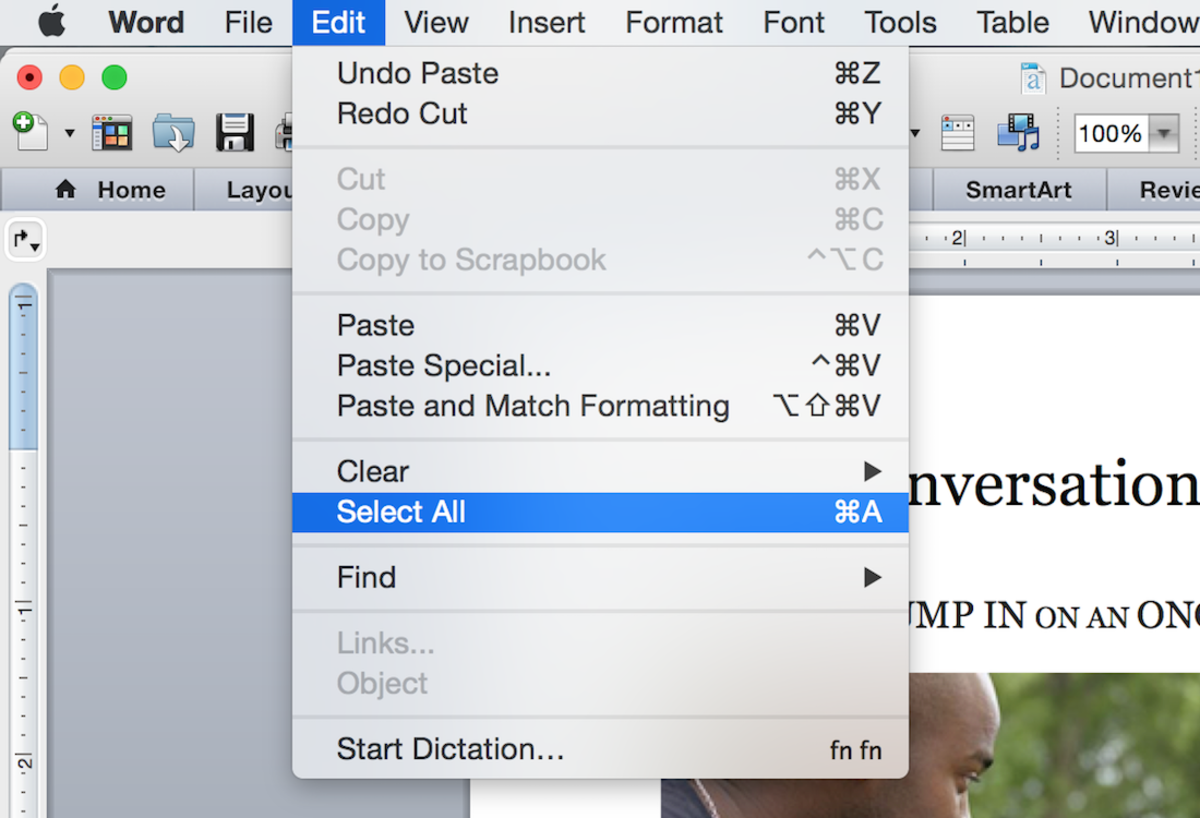In Word For Mac How To Select Objects
When you need to apply the same formatting to multiple parts of a Microsoft Word document, there’s no need to go through the same motions repeatedly. Word provides a smogasbord of techniques for formatting a bunch of elements in a document quickly and efficiently. Updating number sequence footnote word for mac 2016. Using multiple selections One of the simplest methods is to make multiple selections before applying any formatting. Just hold down the Ctrl key while you use the mouse to select different sections of text (or other elements in your documents, such as pictures), then apply the formatting. Each item you’ve selected will receive the same formatting. Using the Format Painter The Format Painter is the little icon on your toolbar that looks like a paintbrush (it’s located in the Home tab in Word 2007 and 2010, and on the Standard toolbar in earlier versions).
The Format Painter “picks up” the formatting of an existing piece of text or graphic and then paints it on the next thing you select. To use it: • Select the item which contains the formatting you want to copy. If you want to copy text formatting only, select a word or section within a paragraph. If you want to copy paragraph formatting as well as text formatting, then select an entire paragraph. • Click the Format Painter. If you want to apply the formatting to more than one element, double-click the Format Painter instead of single-clicking it. • Click and drag over the item(s) you wish to “paint” with the formatting.
• If you double-clicked the Format Painter in step 2, click it once more or press the Esc key to deactivate it. Using the magic F4 key Pressing the F4 key tells Word to repeat the last action you took, so it’s useful not only for repeating formatting but for repeating many other commands in Word.
For example, if you type a paragraph and then press F4, Word types a copy of that paragraph. If you use the table creator to insert a four-column-by-three-row table and then click in another place in your document and press F4, Word will insert another 4-by-3 table. If you apply underlining to a word then click another word, it, too, will be underlined. There are several important things to keep in mind when using this wonderful key: • F4 is incredibly literal. It repeats the very last command no matter how trivial that command.

Microsoft Word provides features to select multiple objects in Microsoft Word document. This article explains how to select multiple objects or shapes in the MS Word Document. Microsoft Office 2010. Open Microsoft Word 2010 document. Layers: Another way to select objects with the Layers panel is to hold down the Option/Alt key and click on the name of a layer in the Layers panel. That selects all the objects on that layer. Select All: If you want to select all the objects on a spread, you can choose Edit > Select All. (Or use the keyboard shortcut Command/Ctrl-A, while the Selection tool is active. Go to find/replace and select 'Graphic' after clicking on the 'Special' button. That will go in your 'find' box. For replace, click on the 'Format' button and select 'Style' and then find the style that you set up to format the pics.
So if you insert a 4-by-3 table, press Enter to move down a line and then press F4, Word won’t insert another table; it will insert another carriage return – that is, it will “press” the Enter key once more. If you select a heading and change the font to Algerian 48pt then select another heading and press F4, the heading’s font will remain the same but its point size will be change to 48pt (that is, if you applied the font selection before applying the font size). • It’s not always clear what constitutes the last “command”.
For example, if you type two consecutive sentences and then press F4, Word will reproduce the whole two-sentence paragraph. It won’t, as you might expect, simply repeat the last sentence or the last character you typed. Another example: if you select a word and click Bold and then Italic to format it, when you try F4 on another selection, all you’ll get is italic text, without the bold. To get around this, use Word’s font formatting dialog box to apply all the formatting in one go; Word will regard everything you do within the dialog box as a single action.